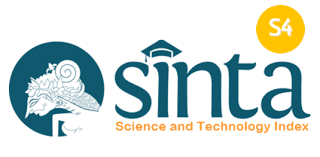ANALYSIS OF THE DISTRIBUTION OF THE EVENT OF DENTAL FEVER THROUGH THE APPLICATION OF GEOGRAPHIC INFORMATION SYSTEM DATA
Abstract
Every year dengue hemorrhagic fever (DHF) is still a public health problem, especially in Gorontalo City. Monitoring activities for patients need to be carried out to prevent disease transmission caused by mosquito bites as an intermediary vector. The utilization of Geographic Information Systems (GIS) related to the monitoring and identifying DHF mosquitoes has recently been widely used in public health science. This study aims to describe the pattern of the spread of dengue fever events through the application of geographic information system data in surveillance activities. This research is a descriptive-analytic study with an ecological approach and geographic information; the design used is Time Series. The research was conducted over six months. The study results based on the results of the Spearmen correlation test between climatic conditions and the incidence of DHF obtained a significance value of p> 0.05. The distribution pattern of dengue fever in Gorontalo City is not related to climatic factors (temperature, humidity, rainfall, and rainy days). Conclusion: The distribution pattern of dengue fever in Gorontalo City is not related to climatic factors, including temperature, humidity, rainfall, and rainy days.
Keywords
Full Text:
PDFReferences
BPS Kota Gorontalo. Kota Gorontalo dalam Angka 2011. Gorontalo; 2011.
Thai KTD et al. Geographical heterogeneity of dengue transmission in two villages in southern Vietnam.Epidemiol. Infect. ; 138(4):585-591.to Time Series Analysis and Forecasting. Hoboken, New Jersey: Willey. 2009;
Widyaningsih Y PT. A space-time scan statistic to detect cluster alarms of dengue mortality. 2008;
Boekoesoe L. Ancaman Demam Berdarah Dengue (Analisa Temuan Kasus Di Kota Gorontalo). Makassar: Samudera Himalaya,; 2015. Hal. 60-61.
Duma N, Darmawansyah AA. Analisis Faktor yang Berhubungan dengan Kejadian Demam Berdarah Dengue di Kecamatan Baruga Kota Kendari. Analisis. 2007;Vol 4, No.:hal. 91-100.
Dalimunthe. Faktor-faktor Yang Mempengaruhi Partisipasi Masyarakat Dalam Program Pencegahan Malaria Di Kecamatan Saibu Kabupaten Mandailing Natal.Tesis. Fakultas Kesehatan Masyarakat, Universitas Sumatra Utara. 2008;
Sari CIN. Pengaruh Lingkungan Terhadap Perkembangan Penyakit Malaria dan Demam Berdarah Dengue. Bogor: IPB. 2005;
Pambudi. Faktor-faktor yang Mempengaruhi Partisipasi Kader Jumantik Dalam Pemberantasan DBD di desa Ketitang Kecamatan Nogosari Kabupaten Boyolali Tahun 2009. Surakarta: UMS. 2009;
Sunaryo S. Demam Berdarah Dengue Pada Anak. Jakarta: UI. 2003.
Depkes RI. Pedoman Pelaksanaan Sanitasi Lingkungan Dalam Pengendalian Vektor. Jakarta: DirJen PP & PL Depkes RI. 2001.
Dini et al. Faktor Iklim dan Angka Insiden Demam Berdarah Dengue Di Kabupaten Serang, Makara Kesehatan,. 2010;Vol.14:No. 1 p: 31-38.
Ariati J dan Anwar A. Model Prediksi Kejadian Demam Berdarah Dengue (DBD) Berdasarkan Faktor Iklim Di Kota Bogor, Jawab Barat. Bul Peneliti Kesehat p . 2014;Vol. 42, N:249-56.
Soetaryo. Dengue. Yogyakarta: Medika Fakultas Kedokteran UGM. 2004.
Arman EP. Faktor Lingkungan dan Perilaku Kesehatan yang Berhubungan dengan Endemisitas Demam Berdarah Dengue.Tesis. Fakultas Kesehatan Masyarakat, Universitas Airlanga Surabaya. 2005.
Dirjen P2M & PLP. Menggunakan ArcView GIS, Modul Sistem Informasi Geografis untuk Intensifikasi Pemberantasan Penyakit Menular. Depkes RI; Jakarta. 2004.
DOI: https://doi.org/10.35971/jjhsr.v3i2.10469
Refbacks
- There are currently no refbacks.

This work is licensed under a Creative Commons Attribution-ShareAlike 4.0 International License.
Jambura Journal of Health Sciences and Research is licensed under a Creative Commons Attribution-ShareAlike 4.0 International License
</p



_.png)




_edit.png)




